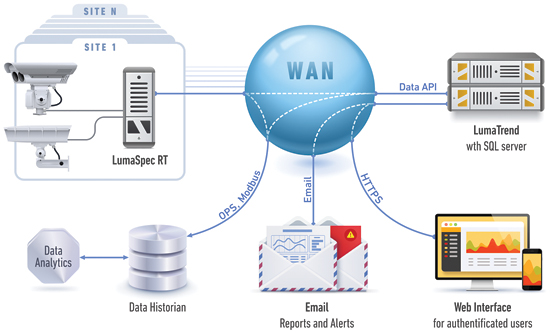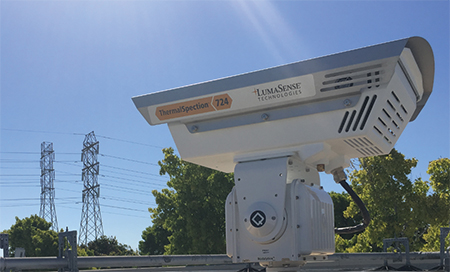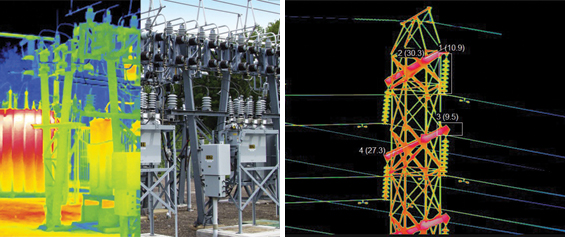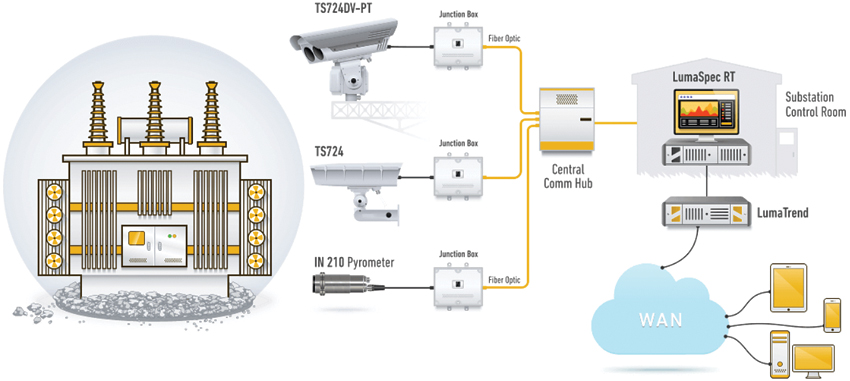Conditioned-based maintenance (CBM) is essential for electric utilities. In fact, most utilities have initiatives and investments to realize these goals. The use of thermography is a well-proven technique for monitoring conditions and detecting faults in electrical equipment. For many years, portable thermal imaging cameras were a reliable tool in condition-based and preventive maintenance of electrical distribution systems in low-, medium-, and high-voltage installations, where they are often used at periodic time intervals.
However, manual thermography inspections limit the practicality and scalability of applying CBM. There is significant cost in performing the inspections and the data gathered tends to be imprecise. Finally, even if good data is collected, there is a shortage of effective tools and resources to analyze the data. Advancements in thermography allow this proven CBM tool to be automated thus enabling utilities to better realize CBM.
Detecting equipment problems before failure
With much of the equipment at electrical power substations nearing the end of useful life, the potential for faults or the complete failure of these devices due to their age increases. Use of thermal imaging to detect equipment problems is attractive since the non-contact nature of the technique allows assessments to be done safely while equipment is in operation.

However, manual and periodic inspections are limited. They are expensive since workers need to travel and haul equipment which takes them away from other important work. Manual inspections are also prone to error and the results are highly variable depending on load and weather conditions. In addition, due to limited resources, the biggest difficulty may be finding time or people to interpret the results of the manual inspections.
Optimized maintenance concepts in this industry call for automated methods that are data driven. New advancements in data anomaly analysis and continuous monitoring of critical substation connections and assets, such as transformers, bushings, and capacitor banks, provide an automated early-warning detection of developing failures. Electric utilities need an automated, data-driven method to analyze electrical equipment.

Replacing manual inspections that may be erroneous or periodic, with a more rigorous and continuous automated monitoring method allows operators to identify transient thermal events that were not detectable with manual inspections. By deploying thermal imaging systems at critical locations throughout the electrical power distribution system, electric utilities have continuous, online monitoring without the personnel constraints and limited resources. The end result is the decrease in maintenance activity and the procurement of replacement devices becomes a viable strategy. Furthermore, the safety and reliability of the substation equipment is increased and the loss of the distribution of electrical power from a major asset failure can be prevented.
Automated & Remote Thermal Imaging Monitoring
Designed with maintenance-free electronics, automated and remote thermal imaging systems offer a high degree of accuracy for demanding electric power utilities while accurately measuring asset temperature without contact in even the most adverse environments. These systems allow utilities to continuously monitor the temperature profile and long-term thermal trends of assets within an electrical power substation remotely. This allows for incredible condition-based maintenance by allowing operators to automatically detect temperature deviations from normal operating conditions in real-time.
The most comprehensive systems for monitoring electric power substations combine both thermal and visual imagers on a pan-tilt unit, fixed thermal imagers, and fixed single point infrared pyrometers. Camera enclosures and cooling systems may also be included for more reliable, long-term installations.

Data Automation and Informing Users
Automated thermal imaging systems have a communication link from each camera to a controller that allows for quick access to the camera’s thermal readings and configuration options. The local controller can be a utility-approved computer or a server which will run the included software. This software allows the user to define automated ‘inspection tours’ of the substation or industrial setting to monitor multiple areas. Operators can also use the software pan and tilt controls for manual positioning of pan-tilt units. Data from the controller is also published to existing data historians, for example PI from OSIsoft, using Modbus or OPC protocols.

In parallel, data can optionally be published to a Microsoft SQL database using a separate server. This provides a central repository for data and images from substation and plants throughout a user’s enterprise. With such a system, centralized engineering and operations staff can easily review data and images from all camera from anywhere on the corporate network. The data collected by the cameras can be put in the hands of experts, wherever they may be. The thermal images and temperature data can also be setup to trigger alarms, automatically publish reports, and perform retrospective analysis. Because of this technology, this software can help identify transient thermal events not detectable with manual inspections.
Since this type of software uses authenticated web browser access, users can capture, access, and analyze data on managed assets remotely. Users can also set up email notifications for reports, alarms, and warnings. Real-time notifications can be sent to experts who then review the data, suggest additional investigative action, and schedule conditioned-based maintenance.
While automated and remote thermal imaging systems are a very accurate and reliable solution especially for substations and electrical switchgear monitoring, they can also be used in industrial settings such as detecting hot spots in fuel storage facilities or monitoring for degradation of refractory in high temperature furnaces and vessels.
About the Author
 Lenny Shaver has been with LumaSense Technologies in a variety of engineering, product development, and product management roles for more than 15 years. Today Lenny leads LumaSense Technologies’ software development team and solutions roadmap taking advantage of his broad industrial experience to guide developments to meet customer needs. In earlier roles at LumaSense, Lenny led multi-disciplinary teams to develop turn-key solutions for power plants, steel plants, and petrochemical refineries that combined infrared technology, sensors, mechanics, networking, computers, and software to improve process and safety. Lenny started his career as a design engineer developing optical sensing solutions for harsh energy and industrial applications. Prior to joining LumaSense, Lenny was a mechanical engineer at Watlow Electric. Lenny has two engineering degrees (BSME and BSEPP) from Washington University in St. Louis, is published in many trade journals, presents at industry events, and has a US patent for a novel temperature sensor. Lenny works out of LumaSense headquarters in Silicon Valley California and lives with his family in San Francisco.
Lenny Shaver has been with LumaSense Technologies in a variety of engineering, product development, and product management roles for more than 15 years. Today Lenny leads LumaSense Technologies’ software development team and solutions roadmap taking advantage of his broad industrial experience to guide developments to meet customer needs. In earlier roles at LumaSense, Lenny led multi-disciplinary teams to develop turn-key solutions for power plants, steel plants, and petrochemical refineries that combined infrared technology, sensors, mechanics, networking, computers, and software to improve process and safety. Lenny started his career as a design engineer developing optical sensing solutions for harsh energy and industrial applications. Prior to joining LumaSense, Lenny was a mechanical engineer at Watlow Electric. Lenny has two engineering degrees (BSME and BSEPP) from Washington University in St. Louis, is published in many trade journals, presents at industry events, and has a US patent for a novel temperature sensor. Lenny works out of LumaSense headquarters in Silicon Valley California and lives with his family in San Francisco.








